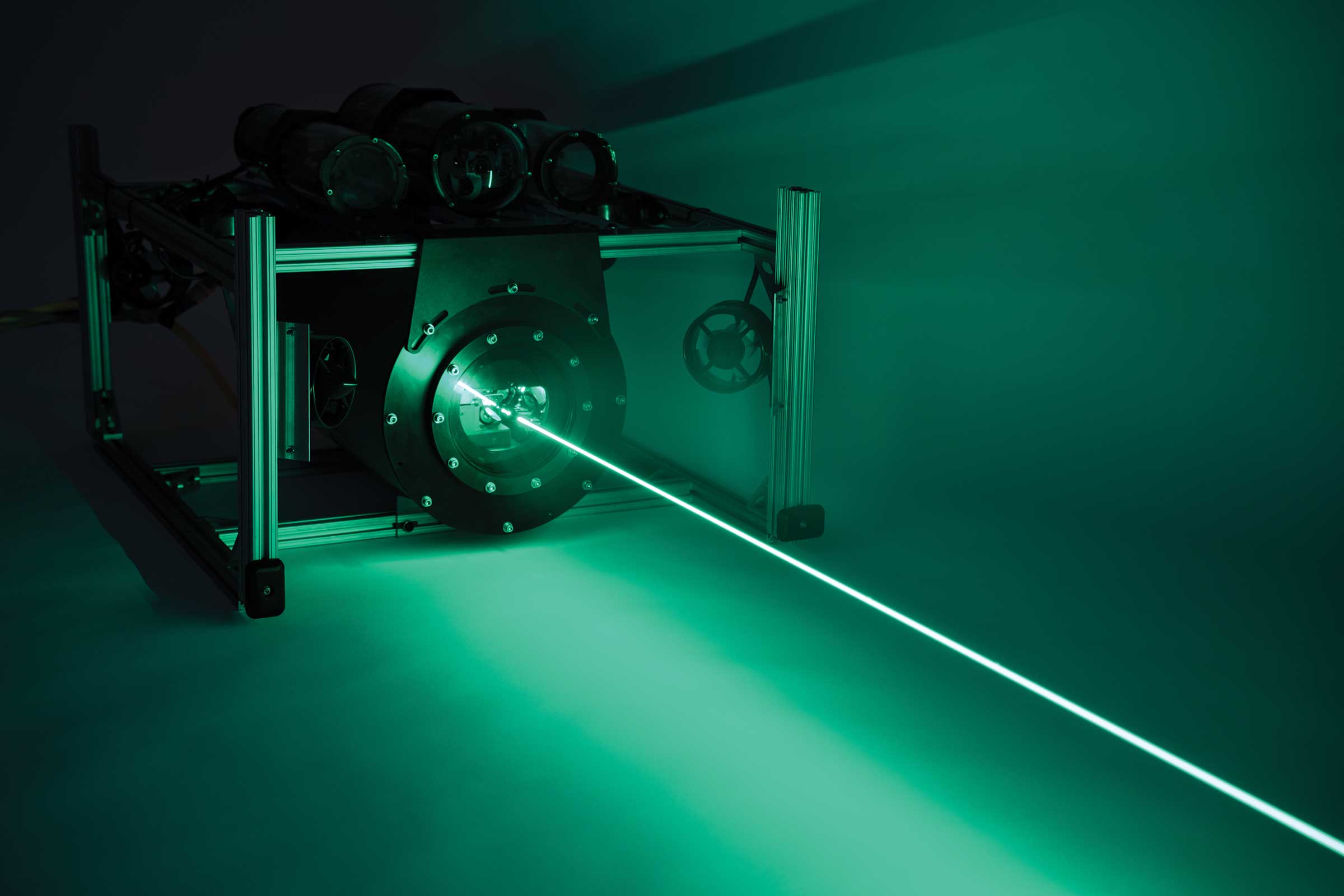Undersea Optical Communications

MIT Lincoln Laboratory has developed and demonstrated optical technology for two-way, long-distance communication undersea and through the air/sea interface. This optical system achieves a data rate more than 5,000 faster than today's rates ─ fast enough to support high-definition video. The system is extremely compact, operates with low power consumption, and is difficult to observe unless directly in the beam path.

Overview
Acoustic links are the standard method of communicating undersea today, but the data rates are slower than those of dial-up modems. Lincoln Laboratory developed a novel approach that revolutionizes undersea communication by providing WiFi-type speeds, a speedup several thousand times greater than achievable with acoustic or radio-frequency links.
The Laboratory's undersea communication technology relies on narrow-beam, low-power lasers and can communicate in both directions at high rates across the air/sea interface. The technology achieves long-distance links underwater by using eye-safe lasers to focus signal energy. Because the light is focused, the receiver can reject interference from sunlight; therefore, the technology provides uniquely robust performance during either day or night. The focused beam is also hard for others to detect. Additionally, the terminal occupies a small volume and consumes low power, making it a good fit for integration into unmanned undersea and airborne vehicles.
Benefits
- Links between two undersea vehicles or from undersea to high-altitude airborne platforms
- Adaptable signaling to support a range of data types, from critical messages to streaming video
- Eye-safe laser operation
- Robust and low-observable day/night operation
- Automatic compensation for vehicle motion and environmental effects
Additional Resources
U.S. Patent 10,491,309
More Information
N.D. Hardy, H.G. Rao, S.D. Conrad, T.R. Howe, M.S. Scheinbart, R.D. Kaminsky, and S.A. Hamilton, "Demonstration of Vehicle-to-Vehicle Optical Pointing, Acquisition, and Tracking for Undersea Laser Communications," Proceedings of SPIE, vol. 10910, Free-Space Laser Communications XXXI, 4 March 2019.
